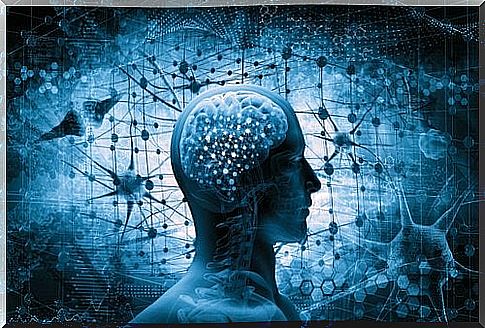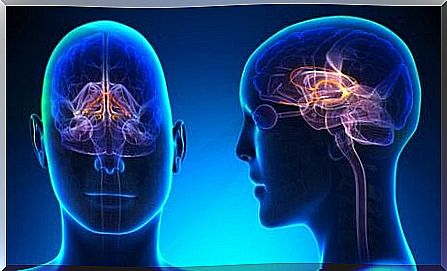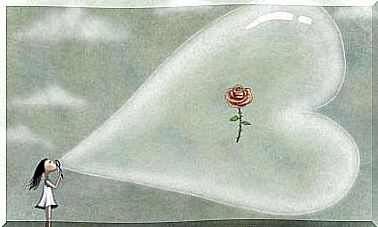The Function Of The Brain In Critical Situations

In critical situations, our brain activates a quick response that triggers a range of behavioral and hormonal responses. In addition, this function of the brain is innate and different from the normal functioning of the brain.
Our brain is the organ with the greatest responsibility for body functions and behavior. In many cases, our brain functions consciously and procedurally (movement functions that have already been learned, such as walking and speaking).
However, in critical situations where a risk or threat is recognized, it works with other neural networks that are responsible for activating the survival system. As a result, our brain is ready to take immediate action.
For example, our neural network system acts as an alarm system and is responsible for making decisions in critical situations. This alarm system is not perfect and can sometimes lead us to make wrong decisions.
In the following you will learn more about how the brain functions in critical situations and what consequences activating our alarm system can have.
Function of the brain: the limbic system and critical situations
The human brain has a neural system that is responsible for emotional processes and reactions related to fear and restlessness. We are referring to the limbic system, which is located in the temporal lobe.
The limbic system contains a structure specifically dedicated to the detection and processing of threats: the amygdala. This structure is connected to different areas of the brain and can trigger fast and intense behaviors.
All mammal species have an innate fight or flight response when exposed to dangerous stimuli. This reaction is triggered by the amygdala.
The alarm reaction can be triggered consciously in the event of serious dangers or unconsciously via a certain combination of key stimuli.

Function of the brain in critical situations
In critical situations, the brain can send the command to flee
Our brains will not ask whether we think it appropriate to escape from a particular situation or to face it. Therefore, an alarm reaction in dangerous moments can worsen the situation because we make quick decisions without measuring their possible consequences. This is the case, for example, when we run away to flee danger.
Conversely, a critical situation can lead to us escaping the perceived danger without recognizing other dangers that we would have to face even more urgently. An example of this is crossing a street without looking either way or throwing ourselves off a balcony.
Your brain can tell you to stay and fight the perceived danger
This is the point in time when a person encounters the threat in order to save their life by overcoming and eliminating that threat. When this sympathetic system is activated, this fighting reaction increases the level of adrenaline in the blood. In addition, an acute stress reaction is generated, which makes the muscles more resilient, the skin less sensitive and the lungs more efficient. All of this also leads to greater power.
Brain function: paralysis or perplexity
A person at risk loses their ability to react. So she may be hiding and cannot do anything. In response, the paralysis expects the threat to simply go away. When this response is activated, the person cannot activate their musculoskeletal system and therefore remains immobile.
As you can see, in critical situations the brain has a survival system that is activated immediately and almost unconsciously. In addition, the function of the brain can make us react inappropriately to a certain situation within milliseconds.
In fact, there are times when the alarm response makes the danger even worse. For this reason, there are professionals who train people how to act correctly in an emergency.
Consequences of activating the survival system
The surest immediate consequence of a critical situation is physical and emotional exhaustion. This extreme fatigue is the result of wear and tear due to a dangerous situation and can last more than a day. In addition, it can continue to linger even after sleeping and resting. This happens because all of our neural and physical resources were geared towards survival and thus consumed a lot of energy.

In addition to exhaustion, critical situations also leave traces in our memory, as the amygdala and hippocampus (the structure responsible for storing new information and memories) work together.
In this regard, the amygdala activates the hippocampus to evoke new memories. Because of this, most people tend to never forget traumatic situations.
Post Traumatic Stress Disorder – PTSD
Similarly, another possible consequence of this activation is PTSD (Post Traumatic Stress Disorder). This psychological state manifests itself after intense physical and emotional activation.
However, PTSD does not always manifest itself only and immediately after a critical situation.
PTSD requires specialized psychological therapy because of its characteristic flashbacks of events that lead to moments of great sadness and the perception of constant threat in the nearby area.
Finally, it is important to remember that the brain can learn to be more adaptive to critical or dangerous situations. Training, emergency protocols, and self-defense strategies are key elements that can help us improve our survival response, thereby strengthening brain function.









